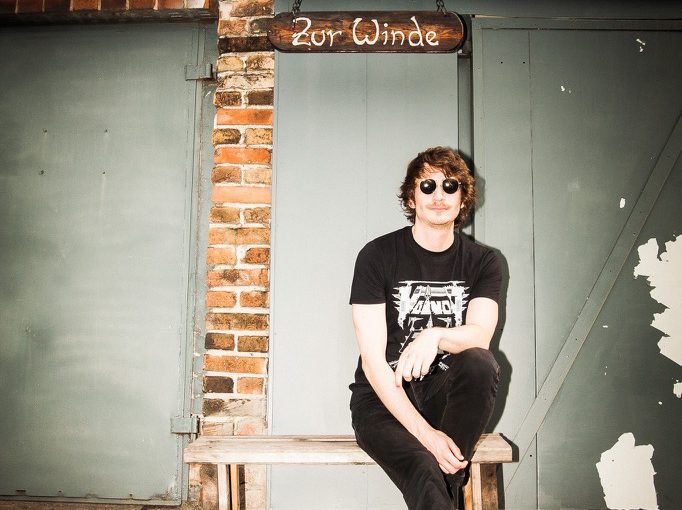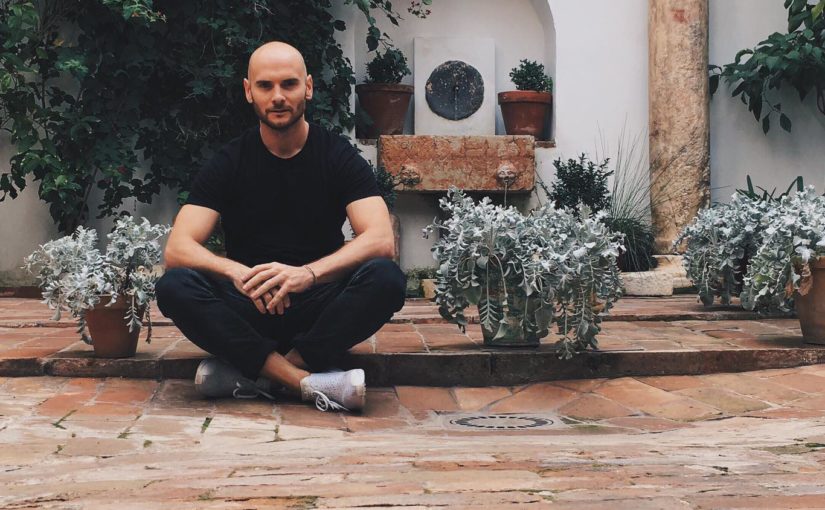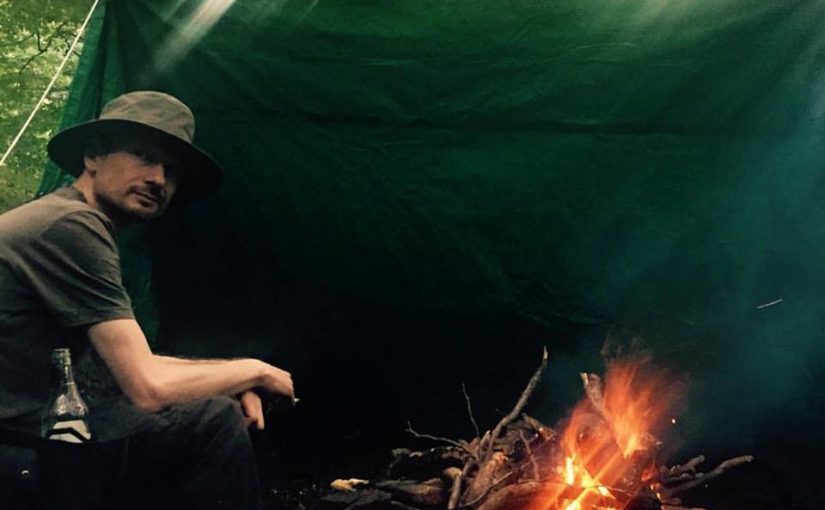This is the fifth in a series of interviews with the Kolapse remixers. Will Cruttenden, who releases his music as Spingere, interviews fellow Englishman Guy Birkin about his Piñata remix.
How did you first make contact with Tobias?
Our first contact was probably through SoundCloud and our participation in the Disquiet Junto. ‘Backup Aura’ was one of my favourite albums in 2011, so Tobias was certainly on my radar at that time but I think we only started corresponding later on. We share interests and follow similar paths.
Why did you choose that particular track over the others?
Structurally Piñata was more suited to achieve the intended aim with this remix: to change the track temporally rather than sonically – that is, to deconstruct it and re-arrange on a new time base. One of the things I like is its irregular beat. Also, I love the sound of that kick drum. Because this track is mostly made of percussive sounds, it makes it easier to chop up using transient-detection algorithms, which is how I did it. Using this method the kick drum stem was cut up into 1,543 pieces. I applied the same process to two other parts, the high and low metallic clang sounds, cut into around 900 and 1,400 pieces. Before these fragments of sound were aligned on a new tempo grid, I sorted them into different sequences based on analysis using measures of information content. This is something developed from my research on complexity, and I wanted to use this approach for this remix. So it was the characteristics of that kick and those clang sounds in Piñata that determined my choice of track because they allowed me to use this method.
Tell me more about your research on complexity. How does it apply to fields outside of music?
Well, this research started outside of music, because it stems from my PhD which investigated visual complexity and from my visual art practice which uses scientific or technical methods (e.g. cellular automata, statistical analysis) to make generative artwork. This research turned that process around, using this approach to study how complexity in visual art is perceived. The central research question was about the relationship between visual complexity and aesthetic value. Information theory and algorithmic complexity theory provided the theoretical support for using data compression algorithms as a way of measuring complexity. The underlying theory of this measure, called ‘minimum description length’, is that the complexity of an object can be measured in terms of how much information it contains. A digital image file is a ‘description’ of an image, and data compression algorithms reduce it close to the minimum, and so the amount of information that remains after compression is a measure of its complexity. Evidence from experimental psychology shows a correlation between this measure and subjectively perceived complexity (i.e. complexity ratings of images by test participants). My research corroborated the finding and extended the tests to include more complex images. I also found evidence that the correlation breaks down with random images, because the compression method measures those as being the most complex, whereas we tend to perceive randomness as being quite simple. With this knowledge of the relationship between data compression and perception in the visual domain, we can ask whether a similar correlation might be found in the auditory domain, between digital audio data compression and the perceived complexity of music. That question is driving my current research and my sonic art practice.
How has this method developed during the making of your own music?
The method of research hasn’t changed much – it’s still an empirical investigation, except now I’m working independently, not in academia. But as a method for music-making, it’s always developing, because the research opens up new ways of making, shaping and arranging sounds. I use variations on the original method quite a lot – measuring complexity based on information content and data compression, but it’s is also constantly being refined. More recently, I’ve started using methods developed from network analysis and graph theory. These offer a new way to approach the question of complexity in music, for both analytical and generative purposes. It’s a collaboration with Valdis Krebs, whose research mapped the network of terrorists behind the 9/11 attacks, amongst other things. Valdis mapped the network of notes in Fur Alina by Arvo Pärt, and I wrote a program that uses that network to generate similar patterns. The network maps adjacent notes (two notes are connected if one follows the other) and the program plays successive notes by moving along the connections between them. I’ve now written a program that analyses any MIDI file, maps its network of notes, and generates a new piece based on that network. But at the moment I’ve only got it working on pitch, not yet timing.
How did you know that your remix was finished?
With this remix the aim was to focus on changes in timing – specifically, to re-arrange the rhythmic elements of Piñata on a different tempo, and to use some measure of complexity to re-order those elements. In the end, I also changed the sounds quite a bit too, but I knew most of the work was done when I’d achieved the main technical steps involved in applying that information-based measure of complexity. This included cutting the stems, analysing the pieces, re-arranging them on a new tempo, and editing those placements to disrupt or create patterns. Once that main aim is achieved, then there’s the process of making decisions that are aesthetic rather than technical, and making adjustments that are tonal/timbral rather than structural. It’s at this second stage that it’s hard to know when to stop. Even though most of the technical work is done, it’s easy to spend much longer here, changing instruments, adding effects and tweaking parameters.
Were you tempted to continue or even remix the remix?
Prior to mastering, I declined the opportunity to re-work this remix, but given the chance again, I’d probably make it shorter. However, I’ve extended these methods from this remix and applied them to work that I’ve made subsequently. I’ve also used completely different methods to explore some of the same sonic characteristics that this method produced. Specifically, the perceptual transition between pitch and rhythm that results from changing the rate at which sounds are played. The exploration of these perceptual thresholds is one theme that runs through my practice. It’s part of the creative approach to the research question I described earlier, because it’s a way of exploring the relationship between physical properties, information and perception that are at work in the art of music.
Download Kolapse for free, find Guy’s other music on his website and sign up for the a100ql newsletter where I share news, thoughts, essays and materials related to the blog once or twice per month.





